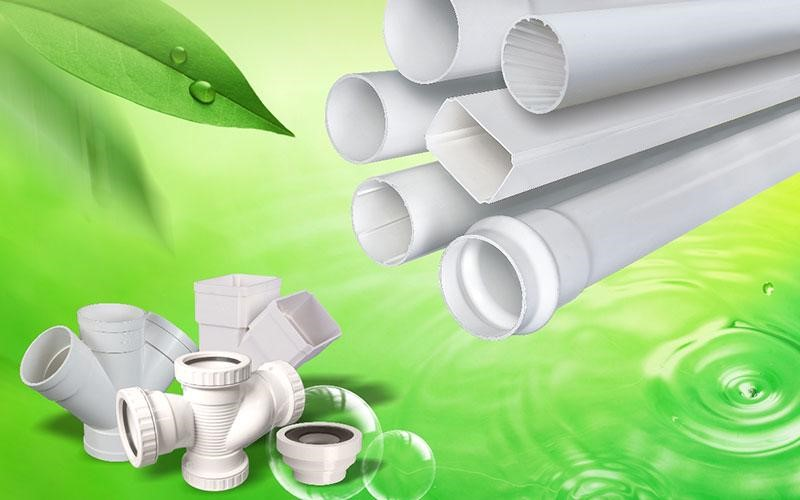
Polyvinyl Chloride (PVC) is a commonly used plastic material that has several negative impacts on the environment, including toxic chemical releases during production and disposal, and non-biodegradability. As a result, there is a growing need for sustainable alternatives to PVC. One popular alternative is polyethylene (PE), which is made from petroleum but is considered to be a more environmentally friendly option due to its lower toxicity and recyclability. Additionally, bioplastics such as polylactic acid (PLA) made from renewable resources such as corn starch, sugarcane, and potatoes are also gaining popularity as they are biodegradable and compostable. These alternatives offer a greener solution while still providing the durability and versatility needed in a wide range of applications.
Material Guide: How Sustainable is PVC?
Polyvinyl Chloride (PVC) is a versatile plastic material commonly used in construction, electrical wiring, and packaging. However, PVC production and disposal can have serious environmental impacts, including the release of toxic chemicals and the creation of non-biodegradable waste. PVC is also difficult to recycle, leading to a large amount of waste in landfills.
What are some common uses of PVC in building construction?
PVC, or Polyvinyl Chloride, is a widely used building material in the construction industry. Some common uses of PVC in building construction include:
- Piping: PVC is often used in plumbing systems, as it is a durable and low-cost material that is easy to install and maintain.
- Window frames: are becoming increasingly popular, as they are energy-efficient, low-maintenance, and long-lasting.
- Flooring: PVC flooring is a popular option in many commercial and residential buildings due to its durability, water resistance, and easy maintenance.
- Cladding: PVC cladding is used to protect the exterior of buildings, providing insulation and a weather-resistant barrier.
- Roofing: PVC roofing materials are lightweight and flexible, making them a good option for flat or low-slope roofs.

What are PVC-free products?
PVC-free products are those that do not contain PVC, a common plastic material that has a number of negative environmental effects, including the release of toxic chemicals during production and disposal, as well as non-biodegradability. PVC-free products are intended to provide an alternative while maintaining functionality and durability.
These products can be made from a variety of materials, including polyethylene, bioplastics, and natural fibers. It can be found in a wide range of applications, including building materials, electrical wiring, and packaging.
What is PVC/Vinyon and how is it made?
PVC is a synthetic plastic polymer made from a combination of salt and oil. The basic building block of PVC is vinyl chloride monomer (VCM), which is produced from petroleum or natural gas through a series of chemical reactions. PVC is commonly referred to as “vinyl” or “Vinyon.”
To make PVC, VCM is polymerized or joined together to form long chains. PVC resin can then be shaped and formed into a variety of shapes and forms, such as pipes, window frames, flooring, and clothing. Depending on the desired properties, various additives, and stabilizers can be added to PVC during the manufacturing process.
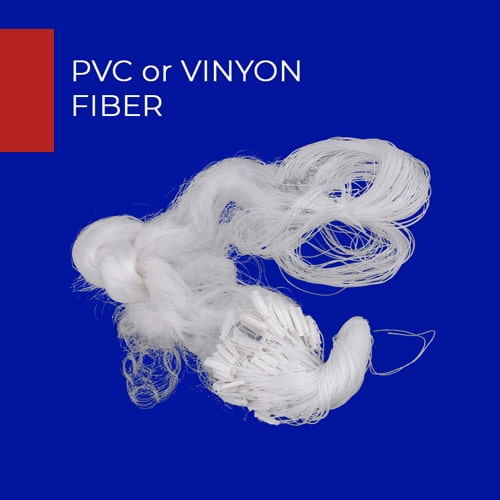
What are the Environmental and Ethical Costs?
The environmental and ethical costs associated with (PVC) production and use include:
- Production: PVC production releases toxic chemicals into the air and water, including dioxins, which are known to have harmful effects on human health and the environment.
- Disposal: PVC is non-biodegradable and can take hundreds of years to break down in the environment. As a result, it contributes to the growing problem of plastic waste in landfills and oceans.
- Health hazards: PVC production and disposal can lead to the release of toxic chemicals into the air and water, which can pose health risks to communities living near production facilities.
- Human rights: PVC production often takes place in countries with weak labor laws, leading to exploitation and abuse of workers in the industry.
In light of these environmental and ethical costs, there is a growing interest in finding more sustainable alternatives to PVC, such as bioplastics and polyethylene, which have a lower impact on the environment and offer a more responsible solution.
Can EVA be mixed with PVC?
Yes, Ethylene-Vinyl Acetate (EVA) and Polyvinyl Chloride (PVC) can be mixed together to form a composite material. It has properties that are different from those of the individual components and is often used in applications where a combination of flexibility, durability, and shock absorption is desired.
By blending EVA and PVC, manufacturers can achieve a specific set of properties that are tailored to the needs of their specific application. However, it is important to note that the environmental impact of the composite material will depend on the specific components used and the methods used for production and disposal.

What are the alternatives to PVC?
Polyvinyl Chloride (PVC) has a number of alternatives that offer more sustainable solutions with a lower impact on the environment and human health. Some of the most popular alternatives to PVC include:
Polyethylene (PE): Polyethylene is a thermoplastic material that is widely used in packaging and consumer goods due to its low cost and versatility.
Polypropylene (PP): Polypropylene is a versatile and durable plastic that is commonly used in consumer goods, packaging, and construction materials.
Bioplastics: Bioplastics are made from renewable materials, such as corn starch or sugarcane, and have a lower environmental impact than traditional petroleum-based plastics.
Bioplastics are a type of plastic made from renewable resources, such as corn starch, sugar cane, and potato starch. Unlike traditional plastics, which are made from petroleum, bioplastics are biodegradable and compostable. This makes them a more environmentally friendly alternative to traditional plastic.
Natural fibers: Natural fibers, such as cotton, jute, and hemp, are increasingly being used as alternatives to PVC in applications such as clothing, home furnishings, and building materials.
Glass: Glass is a non-toxic, non-polluting, and infinitely recyclable material that can be used as an alternative to PVC in applications such as window frames and pipes.
While PVC has a number of alternatives, it is important to carefully evaluate the environmental impact of each material and consider factors such as production methods, disposal methods, and overall sustainability in making a decision.
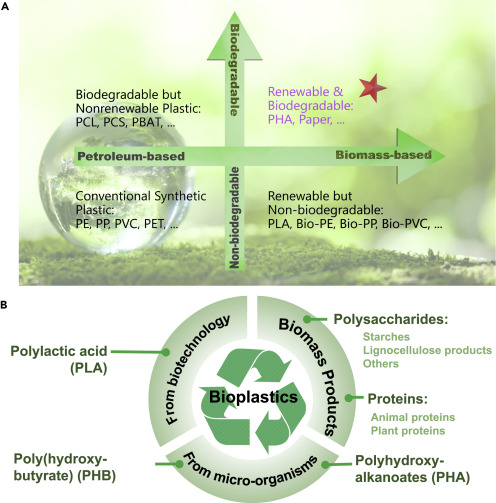
Learn more about sustainable and ethical materials
Sustainable and ethical materials are those that are produced and used in a way that minimizes harm to the environment and to people. This includes materials that are made from renewable resources, are energy-efficient to produce, and have minimal toxic emissions. Additionally, ethical materials are those that are produced under fair labor conditions and do not contribute to exploitation or human rights abuses.
To learn more about sustainable and ethical materials, it is important to research the production processes, the environmental impact, and the labor conditions involved in their creation. This can be done through reading independent reports and studies, looking for certifications from organizations that promote sustainability and ethics, and talking to experts and manufacturers.
What are the best eco-friendly alternatives to PVC printing?
There are several environmentally friendly alternatives to PVC printing to consider:
Recycled paper: Paper made from recycled materials is a renewable and biodegradable alternative to PVC.
Bamboo: Bamboo is a fast-growing, sustainable plant that can be used to create a variety of products, including printing paper.
Hemp: Hemp is a versatile plant that can be used to produce paper, as well as a range of other products. Hemp is a fast-growing plant that requires little water and pesticides, making it a more environmentally friendly option compared to other products. In addition to its environmental benefits, hemp is also strong and durable, making it a great choice for a variety of applications.
Soy-based inks: Soy-based inks are a more environmentally friendly alternative to traditional petroleum-based inks, as they emit fewer toxins during production and break down more easily in the environment.
Digital printing: Digital printing eliminates the need for traditional printing plates and reduces the amount of waste generated during the printing process.
When selecting an alternative to PVC printing, it is important to consider factors such as the environmental impact of the material and production process, the durability and quality of the material, and the overall cost of production.
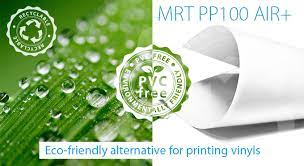
What are the Advantages of PVC-free?
There are several advantages to using PVC-free products. Some of the most notable benefits include:
Environmental sustainability: are often made from renewable resources and have a lower environmental impact, compared to products made from PVC.
Health and safety: PVC has been linked to a range of health and safety concerns, including the release of toxic chemicals and the potential for plasticizers to leach into food and drinking water.
Recycling and disposal are often easier to recycle and dispose of, as they do not contain the toxic chemicals found in PVC.
Durability: can be just as durable and long-lasting as PVC products, and in some cases, they can be even more durable.
Aesthetics: these are often available in a range of colors and styles, and they can add a touch of elegance and style to any space.
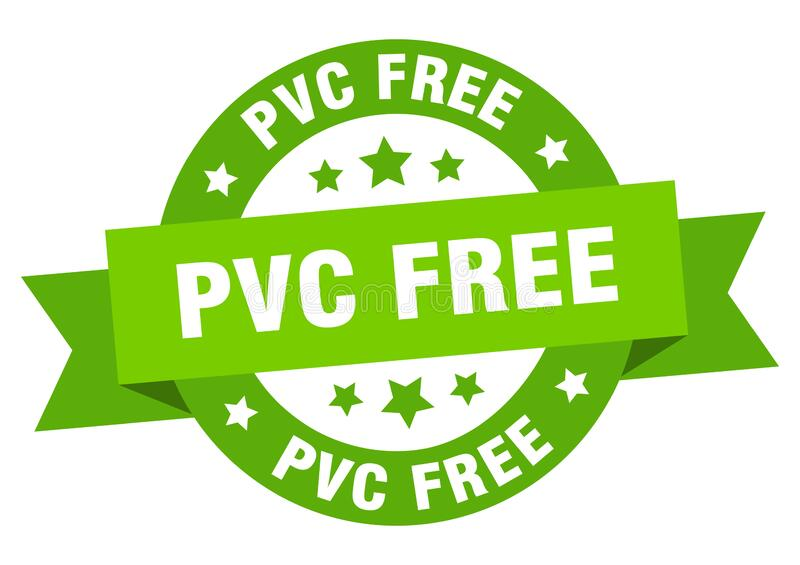
Leave a Reply